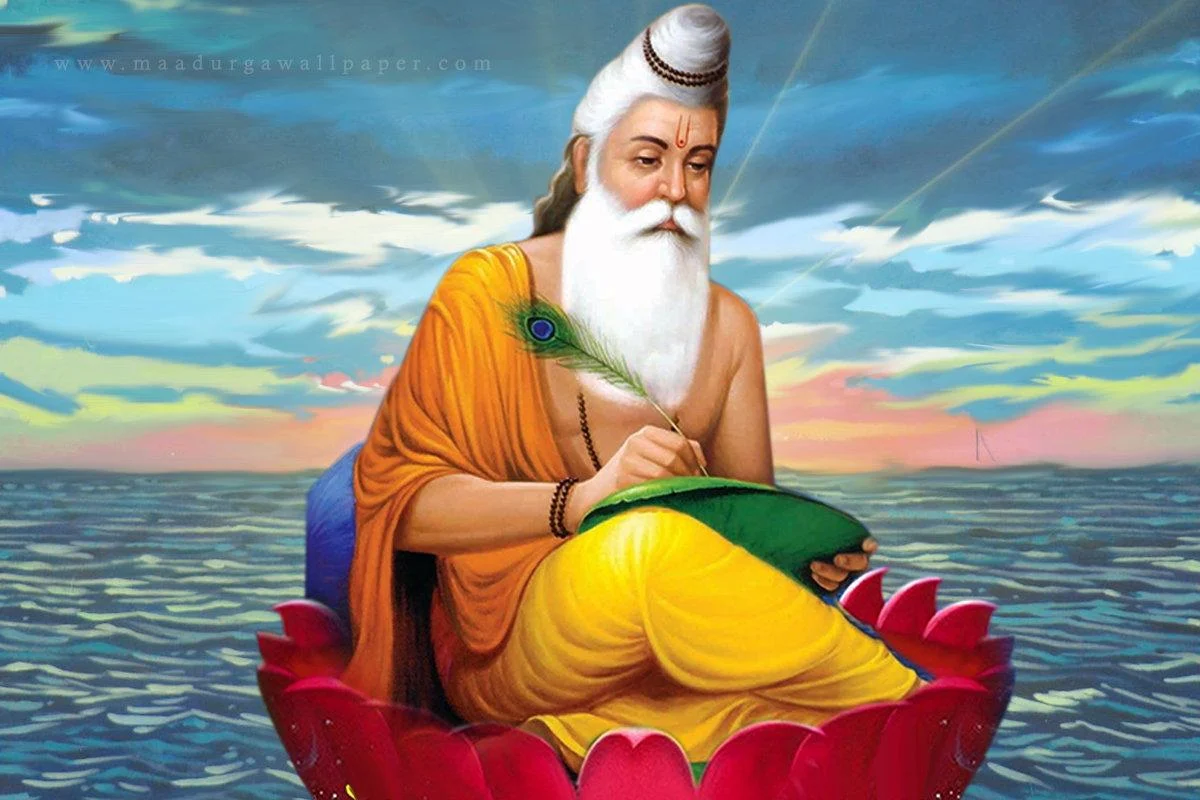"Ma Nishada... A quest that unlocked many meanings."
मां निशादा प्रतिष्ठान्त्वमागम: शाश्वती: समा:
यत्क्रौंचमिथुनादेकमवधीः काममोहितम्
Maa nishaada prathishtaanthvamaagama: shashvatee: sama: Yatcrounchamithunaadekamavadhee: kaamamohitham
One day, the sage Valmiki was enjoying the beauty of nature on the banks of the River Tamsa when he saw a pair of birds happily immersed in their love for each other. Suddenly, a hunter appeared from nowhere and killed the male bird. This saddened and upset Valmiki and he cursed him.
"O Hunter! You have killed one of the Krauncha pair who were deeply in love with each other. For this reason, you may not live long because of the act you have committed!"
After cursing the hunter, the great sage went to his hermitage, greatly disturbed. The phrases kept ringing in his ears. As a sage, he should not have lost his temper. Moreover, the hunter was merely following his Dharma. He paced restlessly in his abode.
The legend goes that a robber once with the name Ratnakara, he encountered sage Narada who reformed him. Narada also requested him to write the great story of Lord Rama, which will become the oldest epic in the world. Having thrust with this responsibility, he had gone to river Thamasa thinking of a way to compose a tune to the epic. The world’s first sloka was born thus. It was then, that Lord Brahma appeared before him. Lord Brahma understood what had happened and consoled him. He also explained that his outburst was lyrical.
Despite this, the Sage was still agitated because the verse seemed to be a curse. He was unsure if that was a good way to start the epic. However, Lord Brahma came to his rescue and advised him to re-interpret the verse. To his joy, the sage realized that the verse could also be interpreted as a tribute to Rama. Thus, the grief (shoka in Sanskrit) transformed into the first-ever verse – Sloka (Shoka transforming into Sloka!).
“O Srinivasa! (Maa Nishada also means ‘the one who bears Goddess Lakshmi in his chest’ – Lord Narayana) Having killed the infatuated male of the Rakshasa couple (Ravana and Mandodari), your praise will remain permanent for many years to come!”.
The epic Ramayana is based on the story told by Narada Muni. It was a continuous flow of Saraswati's blessings until he finished Lord Rama's story!
The sage was none other than Adikavi Valmiki.
The verse "Ma Nishada" appears thrice in the Epic.
II
The story of Jatayu's courageous resistance against Ravana, despite the mortal danger it posed to him, encourages us to stand up against wrongdoings even when the odds seem insurmountable. In our daily lives, this means confronting injustice or supporting others in distress, highlighting the value of bravery and self-sacrifice for the greater good.
In the Ramayana, there is a verse (Ma Nishada..) that illustrates the consequences of killing a bird. This verse serves as a reminder that our actions have consequences and may affect our future lives or the afterlife. The verse warns Ravana that his act of killing a bird will have long-lasting effects and will haunt him for eternity, depriving him of peace. While this was not the sole reason for Ravana's eventual downfall, it was considered one of the many consequences of his immoral actions and a reflection of the moral and ethical principles in Hindu Dharma.
III
Look inside. There is a manishada waiting to be conceived. You have the power to transform the pain in you into the most beautiful truth in words, tones, and shades. ( Swami Krishnananda)







🙏🏻🙏🏻🙏🏻
ReplyDeleteThese snippets from the great Indian mythology teach us to distinguish between evil and good in our daily lives. Therein lies the immense strength of Sanatana Hindu Dharma and the power to bring out the best in a human being…… Amitava Kundu
ReplyDelete